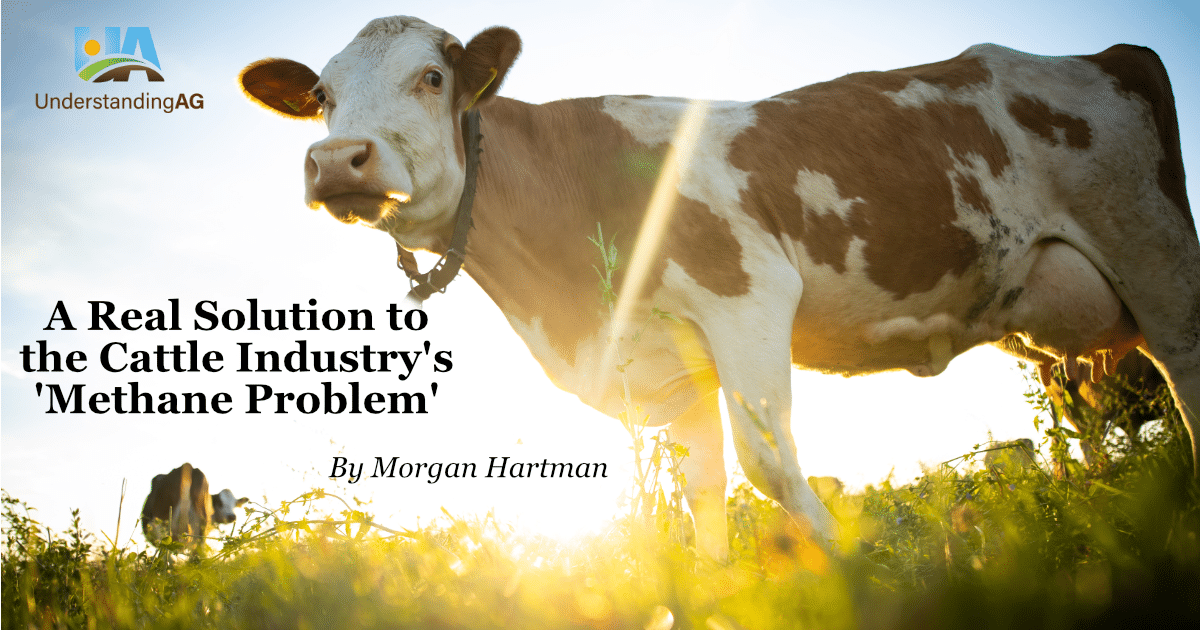
The headline in The Washington Post article, published August 25, 2024, proclaimed “Scientists may have found a radical solution for making your hamburger less bad for the planet.”
The article, written by Shannon Osaka and Emily Wright, examined research currently being conducted at the University of California-Davis using gene editing techniques on rumen microbes to produce less methane from their digestive processes. While the motivation to reduce the amount of methane released into the Earth’s atmosphere may be admirable, the millions upon millions of dollars spent chasing the red herring of livestock rumen microbial methane emissions is not.
Here’s why:
All digestion of food sources by all living organisms on the planet release carbon in various molecular combinations. Two of these are carbon dioxide and methane, and yes, we humans produce a lot of carbon dioxide and methane in our bodies, too.
There is fossil carbon in the form of natural gas (methane), oil and coal. Merely extracting these products releases methane and carbon dioxide into the atmosphere. Processing and distributing these energy products release additional greenhouse gases, as well as when we create electricity, cook our food, or while we’re standing still idling in traffic on a highway or downtown in any metropolitan area. This entire process of extraction, processing, and burning of fossil fuels is the largest culprit in the human induced warming of our atmosphere.
Misplaced ‘cow shaming’
So how and why do cows get blamed for global warming?
First, the way in which cattle are raised in modern dairying, and in confined animal feedlots is highly dependent upon fossil fuels. The entire production chain of the feedstuffs going into modern confinement dairies and feedlots involves the burning of fossil fuels to produce the fertilizers, herbicides, and pesticides necessary for large-scale, mono-crop, industrial production of corn and soy.
The same agri-industrial model relies on the extensive use of soil tillage which burns an enormous amount of diesel fuel globally and releases carbon dioxide and methane from the soil into the atmosphere. The transport and processing of the corn and soy which is delivered to the livestock in confined animal feeding operations (CAFOs), also burns millions to billions of tons of fossil fuels globally. The aggregation of huge numbers of livestock in these operations results in the largely anaerobic digestion of the concentrated manure and urine of these animals, which releases (you guessed it) even more methane and carbon dioxide.
Yet, it is the cows themselves, and their digestive systems, that get blamed for the methane emissions of their burps.
And that brings us to the red herring of, and attempted band aid solution for, the microbial community within the cow’s rumen that is the “cause” of global warming. While well-meaning, these researchers are simply spending a great deal of time and money attempting to treat a symptom rather than the real cause.
In short, these researchers are trying to engineer a solution to a “problem” that can ameliorated naturally (more on that to come), without the unintended consequences of playing Dr. Frankenstein with our animals and food. In much the same way the concept and practice of mechanical, industrial carbon capture is a waste of time and money, because it does not, A.) follow the laws of thermodynamics, and B.) treat the causes of excess carbon in the atmosphere, this attempt to genetically modify small portions of the microbial communities in the rumens of domesticated livestock neglects basic truths of the rumen ecosystem.
Reductionist thinking can help in isolating certain scientific truths, but it is completely inadequate, even counterproductive to understanding the dynamics of natural systems.
Working with, not controlling, natural systems
By contrast, folks focusing on treating the problem by changing their management of livestock and crop production to work in synchrony with nature greatly reduce their fossil fuel consumption footprint, enable the natural systems which are self-healing, self-regulating, and self-perpetuating toward cyclical balance. This is what regenerative agriculture is all about. It, in concept and in practice, follows the unavoidable laws of thermodynamics.
The problems we are experiencing due to the human-caused changes in atmospheric chemistry all are the result of natural systems and cycles that are out of balance. History tells us that humans are not great at self-regulation in the way natural systems are. Our engineered “solutions” are rooted in disturbance and control because we typically look at the world mechanistically, in an overly simplistic way—rarely factoring in the complex biological and ecosystem functions that have been evolving and adapting over millennia.
Greatly influenced by Andre Voisin, the French biochemist, farmer, and lecturer, Allan Savory came up with a decision-making process or paradigm called, Holistic Management.
Gabe Brown and Allen Williams, PhD, influenced by Voisin, Savory, and their own academic and applied research while farming and ranching for themselves, came to focus on soil health through the inclusion of animal impact. Eventually they distilled their influences and experience into the Six Principles of Soil Health, Three Rules of Adaptive Stewardship, and Four Ecosystem Processes™, the 6-3-4™.
It is through understanding and utilizing natural systems—remaining as completely adaptive as possible to roll with the myriad uncontrollable variables of life—and seeing the opportunities nature provides, that we can use biology to restore our soil, our food, our farms and our climate.
Free and proven solutions
The folly of manipulating a handful of microorganisms in a handful of animals under ultra-controlled conditions only exacerbates the problem by distracting us from the real solutions, which nature has perfected through hundreds of thousands of years of its “research and development.” Best of all, those nature-perfected solutions are free and available to anyone to use.
In regenerative agriculture we don’t try to fool or control Mother Nature. We listen to her. That’s how we’ll find real solutions.
